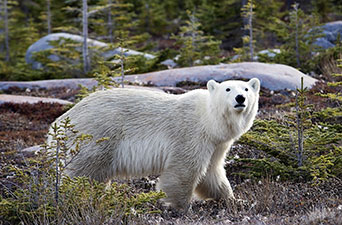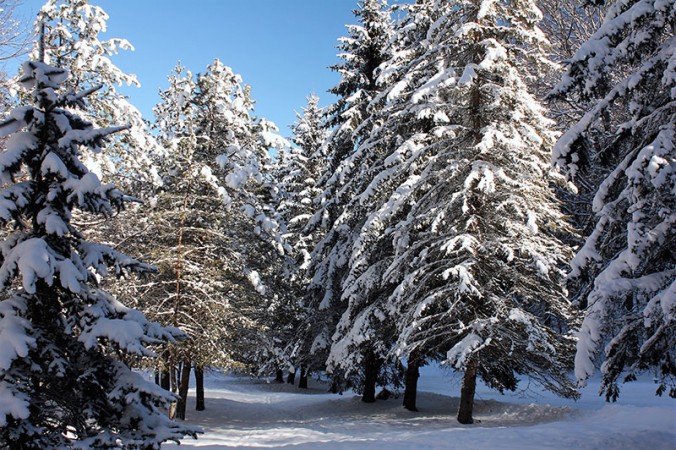Boreal forests are one of the planet’s great ecosystems. Boreal (meaning northern – they are called taiga in Russia) forest occupies the northern sub arctic zone up beyond about latitude 50 encircling the Earth at the top of the Northern Hemisphere across Russia, Scandinavia, Alaska and Canada. The boreal forest belt represents the world’s largest land-based ecosystem and act as part of the largest source and filter of freshwater on the planet.
Temperatures in these boreal forests are usually extremely low with long winter seasons. The soil freezes – only thawing for a few months in the farthest northern forests. Winter air temperatures can fall to as low as minus 60 degrees Celsius. Soils are generally thin and nutrient poor. Most of the water is delivered in the form of snow – 40 to 100 centimetres a year.
The main tree species in boreal forests are conifers – pines, spruces, firs and larches – adapted to very cold climatic conditions. Their needle-like ‘leaves’ have a small surface area that, along with an increasing concentration of sugars and starches, plus specialized proteins in their sap, acts as a natural ‘antifreeze’. Dormant buds at growing tips are each coated with resin to insulate them against the cold. Some deciduous trees, such as birches, alders, poplars and willows are also present in boreal forests.

Polar bear in northern Canada. Boreal forests support the world’s largest caribou herd; the second-largest wolf population; and polar, black and grizzly bears.
There are no boreal forests at similar latitudes in the Southern Hemisphere as this region of the planet is occupied by ocean, ice and penguins!
Boreal forests support the world’s largest caribou herd; the second-largest wolf population; and polar, black and grizzly bears. A number of other notable animal species also inhabit these climatically challenging forests, including moose, lynxes, foxes, deer, bats, woodpeckers and others able to tolerate the cold, harsh weather conditions.
